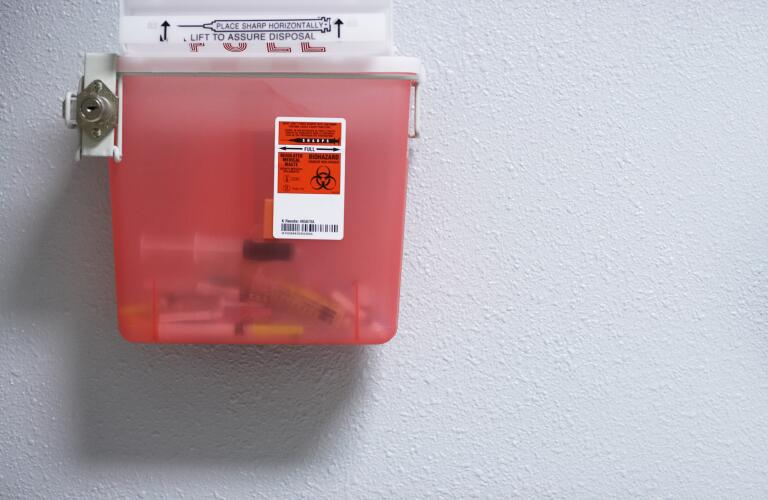
Knowing how to dispose of needles and delivery devices (also referred to as “sharps”), including diabetes injection pens, is an important part of managing your diabetes.
If not disposed of correctly, used sharps can injure people, such as garbage and sewage workers, janitors, housekeepers and family members, and put them at risk for infection and other serious health conditions like Hepatitis and Human Immunodeficiency Virus (HIV).
Safe Disposal Tips
The following are some general guidelines on how to properly dispose of injection pens. Sharps disposal regulations and programs vary by state, and sometimes by town or county. Most require, before disposal, putting sharps in an FDA-cleared container, made of puncture-resistant plastic with leak-resistant sides and bottom. Be sure to call your local garbage collection company, or the city or county health department to inquire about their guidelines.
Talk to your pharmacist. Sharps disposal containers are typically available through drugstores, medical supply companies, and healthcare providers and online. Many of these are free, so ask your local pharmacist for recommendations on the best place to get them.
Make your own container. If you are making your own sharps disposal container, a laundry detergent or bleach bottle is a good option since it’s made of heavy-duty plastic. Do NOT use glass bottles, plastic water bottles, milk jugs, cartons or soda cans, or containers that are broken or punctured. Put the cap on tight and seal with heavy tape. It must be clearly labeled “SHARPS” so others know it cannot be recycled.
Discuss with your doctor/diabetes educator. There are many different injection systems for diabetes medications. Large, multi-dose devices allow you to frequently and easily replace the needle. Smaller disposable systems require you to dispose of the pen/syringe with the needle attached. Your doctor or diabetes educator will review disposal guidelines with you, but again, check your area guidelines if you have questions.
Always discard the pen with the pen cap on. Place the needle, or pen with needle attached, in a sharps disposal container. Do not recycle the needle or pen.
Take it to a collection site. Take your sharps container to an appropriate collection site. These include doctors’ offices, hospitals, pharmacies, health departments, fire stations and other locations.
Consider a mail-back program. Injection pens can also be sent through the mail for disposal in special containers. The cost of the container usually includes shipping and you can save big by buying in bulk.
Keep out of reach. If you have children or pets, be sure to keep injection pens where your little ones can’t reach them.
Don’t flush. Never dispose of an injection pen in the toilet or drop it down a sewer drain.
If Someone Gets Stuck
Even if you take all the necessary precautions when disposing of your injection pen, accidents can, and do, happen. If someone in your household is stuck by another’s used needle:
1. Immediately wash the exposed area with water and soap, or use a skin disinfectant (antiseptic) such as rubbing alcohol or hand sanitizer.
2. Call your doctor or local hospital for care right away.
Once you know how to safely dispose of your diabetes injection pens, it will become a regular and simple part of your care routine. If you have any questions, talk to your diabetes doctor, or visit http://www.safeneedledisposal.org to find your state guidelines and disposal locations near you.











